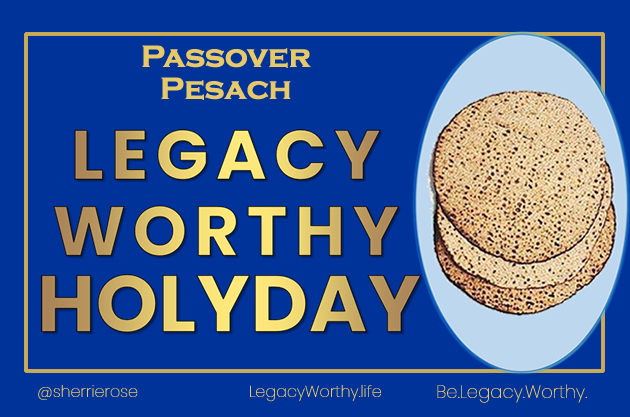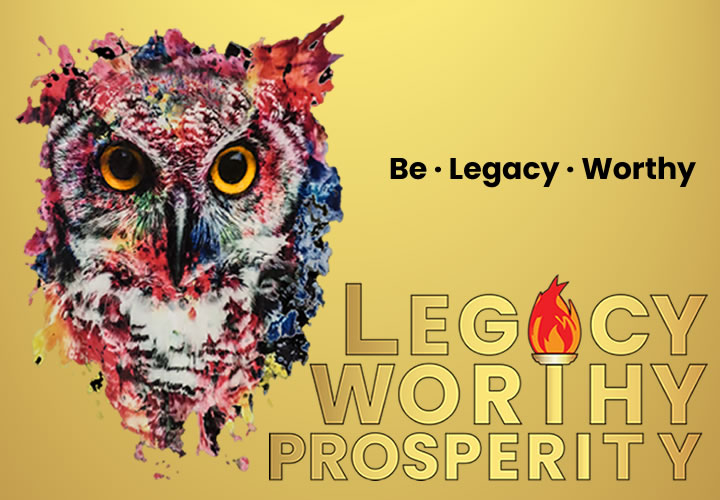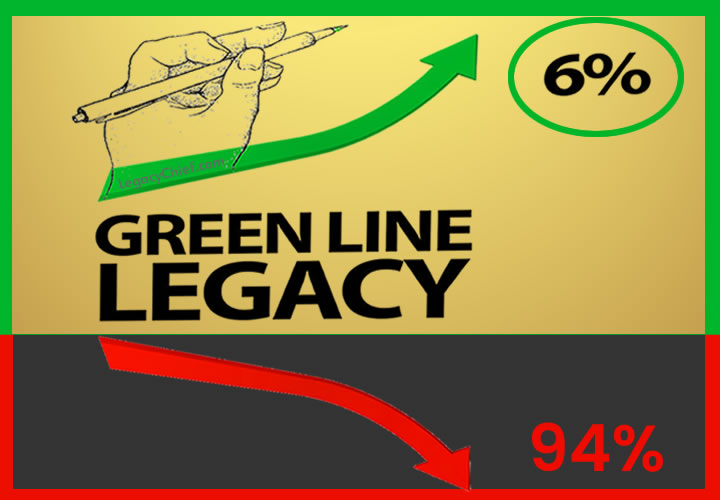Legacy Worthy Liberation – Passover – Israelite’s Escaping Slavery In Egypt

Legacy Worthy Liberation – PASSOVER – Israelite’s Escaping Slavery In Egypt
Passover – Pesach -Begins on the 15th Full Moon of the Jewish Month of Nisan – A Jewish Holiday Commemorating The Liberation Of The Israelite’s Escape From Slavery from the Pharaoh of Egypt
Passover is an important Jewish holiday that has been celebrated for thousands of years. It commemorates the liberation of the Israelite’s from slavery in Egypt and takes place often in April on the 15th day of the Jewish calendar month of Nisan. This annual event is a universal symbol of freedom, unifying Jews around the world as they remember their ancestors’ struggle to escape oppression and slavery.
Passover is steeped in legacy worthy history and tradition, but it also offers valuable lessons for us today. It serves as a reminder that we must never forget our past and must strive to create a better future for ourselves and our descendants. Discover why so many people have found liberation through this ancient celebration – and how it continues to inspire us even today. #legacyworthy #liberation
#1 Meaning, Significance, And History Of The Festival
Passover is an ancient Jewish holiday that celebrates the miraculous liberation of the Israelites from slavery in Egypt 3335 years ago and marks the first step on their journey to freedom. As one of the most important dates on the Jewish calendar, Passover begins on the 15th day of Nisan, which usually falls between March and April.
The story of Passover is found in Exodus 12-13, beginning with God’s command to Moses and Aaron that all first-born sons should be spared from death at the hands of an angel sent to punish Pharaoh for not freeing the Israelites. The Israelites were instructed to take a lamb or kid without blemish and slaughter it as a sacrifice. They then marked their doorposts with its blood as a sign that they were part of God’s chosen people, and so would escape from Pharaoh’s wrath.
This event was celebrated as an annual feast, known as Pesach (Hebrew for ‘pass over’), during which unleavened bread (known as matzah) was eaten in remembrance of the haste with which they left Egypt; they had no time to let their dough rise before baking it into bread. The seder meal continues today, incorporating symbolic foods such as bitter herbs (to remember the bitterness of slavery) and charoset (a sweet mixture resembling mortar used by slaves to build Pharaoh’s cities). Through this ritual we remember our ancestors’ legacy worthy faithfulness to God despite adversity, while celebrating freedom and joy in our lives today.
#2 Matzo And Passover Preparations
As Passover approaches, the Jewish people begin to prepare for the holiday. One of the first steps in preparation is the baking of matzo, a traditional unleavened bread that symbolizes the haste with which their ancestors left Egypt. Matzo is made by mixing flour and water together and baking it quickly, so that no time is given for fermentation to occur. This process results in a crispy texture that makes it ideal for use in many dishes during Passover meals.
In addition to making matzo, Jews also engage in other preparations for the festival such as cleaning their homes from any traces of leavened bread and making sure all non-Kosher foods are removed from their pantries. They also observe certain customs such as abstaining from eating any type of leavened food throughout the duration of Passover. Furthermore, some families choose to purchase special dishes or utensils which are used exclusively for Passover meals.
Finally, once all of these preparations have been completed, families can sit down together and celebrate this joyous holiday with festive traditions like singing songs, sharing stories, and partaking in special foods such as charoset (a combination of apples and nuts) or kugel (a dish made from egg noodles). All in all, these special preparations help bring family members closer together while also reminding them of their ancestors’ liberation from slavery.
#3 The 8 Day Passover Rituals And Ceremonies
Passover is a time to celebrate the liberation of the Israelites from slavery in Egypt. As part of this celebration, Jews observe several day rituals and ceremonies.
The first ritual is called Seder, which means “order” in Hebrew. It is observed on the first two nights of Passover and involves eating symbolic foods, reciting prayers, and reading passages from the Haggadah – a book that recounts the story of Exodus. The most important part of this ritual is to enjoy a festive meal with family or friends while recounting the miraculous journey of Moses leading his people out of slavery. Note: If a Jew lives in Israel, they only celebrate on Passover seder.
In addition to Seder, another popular ceremony during Passover is hand-washing with blessings as a regular deed. This ceremony is said once without the blessing making it unusual from the norm. There are 15 sections of the Passover seder of which hand washing is only one. All are outlined in the Haggadah.
Passover is an important holiday for Jews around the world as it celebrates freedom from oppression and serves as a reminder that even when faced with difficult circumstances, there will always be hope for rebirth and transformation. #legacyworthy #liberation
#4 Four Cups Of Wine Symbolism
The four cups of wine held during the Passover Seder are imbued with immense symbolism. Every year, they serve as a reminder of the Israelites’ miraculous deliverance from slavery in Egypt. The first cup is known as the Cup of Sanctification and symbolizes the freeing of the Jewish people from bondage. It signifies God’s promise to never again let them suffer such oppression.
The second cup is called the Cup of Plagues and recalls the ten plagues God visited upon Pharaoh and his people to persuade him to release His chosen people. The third cup is known as the Cup of Redemption and stands for Moses’ leadership in guiding the Israelites out of Egypt toward freedom. Finally, there is the fourth cup—the Cup of Praise—which honors God for His miraculous acts throughout history and celebrates His enduring love for mankind.
For Jews around the world, these four cups are a powerful reminder that we must always remain vigilant against injustice, oppression, and tyranny wherever it exists and strive to create a world where all people can live free from fear or subjugation.
#5 The Passover Seder Plate
Continuing from the symbolism of the four cups of wine, another important part of the Passover seder is the Seder plate. The Seder plate is a special plate used to symbolically represent elements from the Passover story. Traditionally, it contains six different items that represent various aspects of the exodus from Egypt. These items are: Karpas (a vegetable), Maror (bitter herbs), Charoset (a sweet mixture of fruit and nuts), Chazeret (another type of bitter herb), a roasted egg, and a shank bone.
Karpas, which typically consists of parsley or celery dipped in salt water, symbolizes the bitter tears shed by the Israelites while they were enslaved in Egypt. The Maror and Chazeret are both bitter herbs that represent the bitterness and harshness of slavery in Egypt. The Charoset is composed of fruit, nuts and spices mixed together to form a sweet paste that represents the mortar used by Jewish slaves to build bricks for Pharaoh’s cities. It serves as a reminder that even in times of slavery, we can find joy and sweetness in life. The roasted egg represents new life and renewal after liberation from slavery in Egypt. Lastly, the shank bone represents sacrificial offerings made by Jews during their time in Egypt which have since evolved into modern day rituals like eating matzo during Passover meals.
The Seder plate thus serves as an important visual reminder of all that was endured by our ancestors as they sought freedom from oppression thousands of years ago—and serves to remind us all today to remain grateful for our own freedoms and liberties.
#6 The Haggadah Tradition Of Passover Storytelling
The Haggadah is an integral part of the Passover celebration. It’s a book that is read aloud during the Seder, and its purpose is to tell the story of the Jews’ exodus from Egypt. The Haggadah contains different sources, including Biblical verses, rabbinical commentaries, midrashim, and poems. It’s used to remind us of our history and our journey from slavery in Egypt to freedom in the Promised Land.
Each year at Passover, families gather around the table to retell this story through reading passages from the Haggadah. During the traditional Seder meal, family members take turns reading aloud from the Haggadah. This serves as a way for them to pass down their heritage and remember their ancestors who suffered under Pharaoh’s rule. Additionally, it emphasizes how important it is for Jews to keep their faith alive and how lucky they are today to be free from oppression.
The beauty of storytelling lies in its ability to bring us closer together through shared experiences and memories that all can relate to. By gathering together around a table with loved ones and reflecting on our past, we can continue our journey toward a brighter future. The Haggadah helps us remember our roots while looking forward into tomorrow with hope and optimism. #legacyworthy #liberation
#7 The 10 Plagues
The 10 Plagues is an important part of the Passover story, as it marks the moment when Pharaoh finally gave in to God’s demands and allowed the Israelites to leave Egypt. The plagues were a series of disasters that descended upon Egypt in order to convince Pharaoh to free the Hebrews. Each plague was more severe than the last, making it clear that no one could stand against God’s will.
The first nine plagues were directed at Egypt’s gods and people, while the tenth plague was aimed at Pharaoh himself. This final plague was the death of all firstborn sons within Egypt, while allowing all Israelite firstborns to live. This miraculous event proved that God had chosen His people and freed them from bondage.
After this final plague, Pharaoh released the Israelites with all their possessions, allowing them to embark on their journey towards freedom. Thus began the liberation of God’s chosen people who would eventually enter into a covenant with Him for all generations to come.
#8 Songs And Prayers
Transitioning seamlessly from the 10 Plagues, it is time to explore the songs and prayers that are integral to Passover. This celebration of freedom and redemption is not just marked with historical accounts but also by singing and prayer. These two components bring out a sense of joy and communal feeling which lies at the heart of this special holiday.
Songs are one of the most powerful ways to express feelings, and on Passover they are often used to recall the events that saw the Israelites escape from bondage in Egypt. The most well-known song for this occasion is “Dayenu,” which translates as “it would have been enough for us” in Hebrew. This ancient song expresses gratitude for each step taken in bringing about liberation from slavery, listing all that God has done for his people. Other popular songs such as “Chad Gadya” and “Echad Mi Yodea” are also commonly sung during Passover celebrations.
In addition to singing, prayers are an essential part of Passover gatherings too. These prayers serve to remind us of our shared history and give thanks for being able to celebrate freedom together. Prayers like Maggid, Hallel, Birkat Hamazon (Grace After Meals), Barechu (the Call to Prayer) and others bring us closer together as we remember what brought us here today – our search for liberty through faith.
Passover is a beautiful holiday that celebrates freedom with both stories from our past and modern traditions like songs and prayers that make us feel connected even when we’re apart. Through these practices, we can connect with our ancestors who lived their lives with hope for change despite their circumstances.
#9 End Of Passover Celebration – Yizkor Service
The Yizkor service is a key part of the end of of all major Jewish Holidays and the Passover celebration is no exception. Yizkor is a memorial service to remember those who have lost a parent and relatives who have passed away. The tradition is to recite special prayers to honor their memory and ask for mercy on their souls. This service typically takes place on the last day of Passover, and is one day earlier in Israel than the diaspora.
The Yizkor service begins with a recitation of Kaddish, which is a prayer that praises God and glorifies His name. This prayer is followed by the recitation of several other prayers, all in remembrance of those who have gone before us.
After these prayers are recited, it’s customary for congregants to offer charity in honor of their loved ones’ memories. By doing so, they’re showing that even though those individuals are no longer present with them, they still live on through the good deeds they performed while alive. Additionally, this act serves as an acknowledgment that although death may separate us from our loved ones, we can still keep them alive in our hearts through acts of kindness and giving back to others.
#10 Full Moon And Jewish Holidays
The full moon has long been associated with Jewish holidays, and Passover is no exception. On the 15th day of the Jewish month of Nisan, the first full moon after the vernal equinox signals the start of Passover, a holiday that commemorates the liberation of the Israelites from slavery in Egypt. This ancient practice involves gathering together with family to celebrate a meal called a Seder and to read from a text known as the Haggadah.
The full moon is said to encourage reflection and celebration, making it an ideal time for Passover. The Seder is filled with rituals that help participants remember their ancestors’ journey out of slavery, which is why each night of Passover begins with a blessing over wine and ends with singing “Dayenu”—a Hebrew song expressing gratitude for all that God has done for their people. As such, it’s not surprising that many Jews have come to associate the full moon with hope and renewal.
Passover brings together individuals from all generations, reminding them of their shared history and spiritual connection as they pray, sing, eat, and tell stories. It’s a powerful reminder that we are part of something larger than ourselves—a tradition spanning thousands of years—and one that will continue on for generations to come.
#11 Passover Importance On Jewish Culture
Passover is one of the most celebrated and important holidays in the Jewish culture. It marks the liberation of the Israelites from slavery in Egypt over 3,300 years ago and is commemorated annually with a ritual feast known as a seder. Every year, more than 14-20 million Jews around the globe celebrate this holiday by gathering together with family and friends to retell the story through a traditional meal that includes symbolic foods such as matzo (unleavened bread) and bitter herbs.
The significance of Passover for Jews cannot be understated. It is traditionally seen as an opportunity for spiritual renewal and to pass on faith from generation to generation. For many, it is regarded as a time of commemoration and celebration, a reminder of how their ancestors endured hardship and ultimately achieved freedom. This can be seen in the fact that Passover has been observed since ancient times when the Israelites cross the Red Sea 3335 years ago.
The celebration of Passover also serves as an important social marker: it helps keep alive traditions that have been passed down for millennia, connecting generations within families and strengthening community ties amongst Jews across cultures. Indeed, modern-day observance often includes songs, stories and other activities that help bring people together regardless of their backgrounds or beliefs. Through this shared experience, Jews are able to stay connected to their past while looking forward to their future with hope.
#12 Next Year in Jerusalem!
Legacy Worthy Liberation – Passover – 15th Full Moon Jewish Month of Nisan A Jewish Holiday Commemorating The Israelite’s Escaping Slavery In Egypt
Passover is a significant holiday in Jewish culture that is celebrated passionately and holds great meaning. It marks the liberation of the Israelites from slavery in Egypt, and the importance of family and community is highlighted during this time. The Haggadah tradition of storytelling is an integral part of the holiday, as are the eight days of rituals and ceremonies.
The full moon often coincides with Passover, which is seen as a reminder for Jews to remember their freedom and deliverance from slavery. This religious observance has been celebrated for thousands of years, and it continues to be a powerful symbol for many Jews around the world today. What’s more remarkable is that over 70% of Jews in North America celebrate Passover every year, showing just how relevant it remains in modern times.
Passover continues to be celebrated telling the story Jewish history by many generations. Not only does it remind us of our ancestors’ stories but also serves as a reminder that we must strive for freedom and justice and peace on earth. SHALOM!



